Our detailed Hyundai Venue drive review of both the 1.0-litre DCT petrol automatic and the 1.4-litre diesel six-speed manual variants.
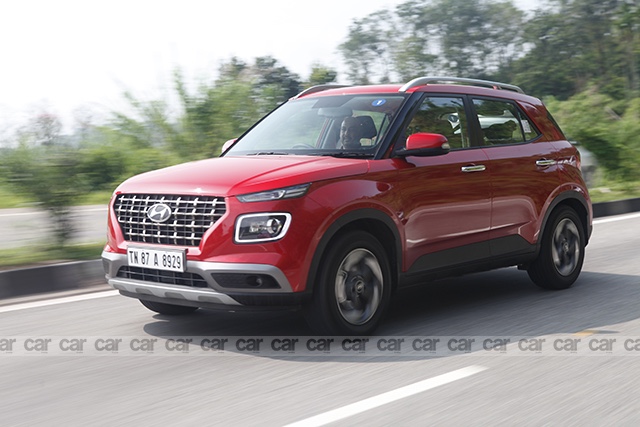
This monsoon, it’s going to be a heavy down pour of SUVs. Right from MG Hector to Kia’s made-for-India SUV. Hyundai is also ready with three SUVs which includes the new Venue compact-SUV, the soon to be launched Kona Electric and the Tucson facelift. Our focus is the Venue, which bridges the crucial gap between the Active i20 and the Creta. I say crucial because out of the entire nine lakh unit size of the SUV market, compact-SUVs takes up almost half of the pie.
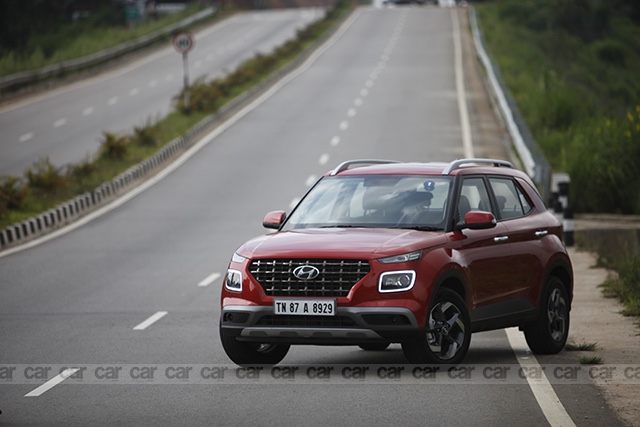
I need not emphasise how important the Venue is for Hyundai, as it enters new, unexplored territory. And the same can be said about our drive location as we head to the North East where a lot is yet to be discovered. Starting from the rain washed roads of Guwahati, we drove through one of the best driving roads of India that lead to Shillong in the neighbouring state of Meghalaya.
There are three engine options to pick from – two petrol and one diesel, we got our hands on the much anticipated 1.0-litre turbo petrol with the seven-speed Dual-Clutch Transmission and the tried and trusted 1.4-litre diesel which gets a six-speed manual. Since the 1.2-litre petrol manual was not available during this drive, we hope to review that in the coming issue of Car India.
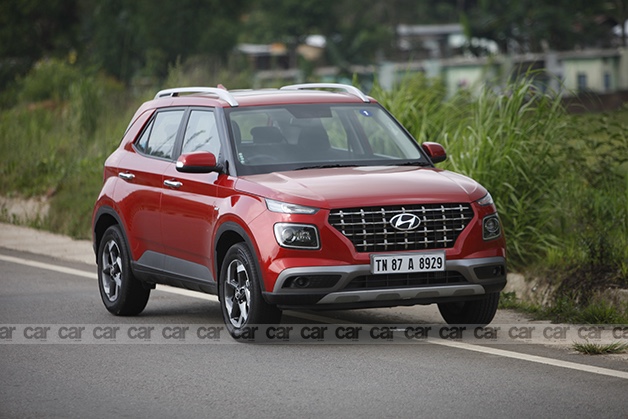
Design
No matter which engine you chose, the exterior design looks identical. Many of my colleagues feel it looks like a sub-four-metre version of the more premium Creta, which I feel works in favour of the smaller SUV. Talking about size, the Venue is has a width of 1,770 mm and is 1,590 mm high making it neither the tallest nor the widest in the segment, but not the smallest here either. The overall proportions work for me since it’s neither too puny nor bulky. Design being objective, I noticed some people frowning at the Venue’s front design, especially the large cascading grille. Plus there are mixed feelings about the #NowTrending, indicator positioned above the headlamps styling. Personally, the rectangular headlamps with the lovely DRLs around it look super premium to my eyes.
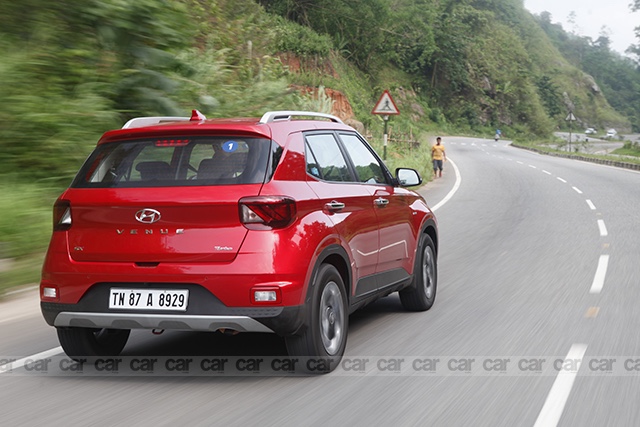
The side profile boasts of full volume wheel arches, rugged plastic claddings and a strong character line which continues to join the tail lamps. There is a strong design influence from its elder sibling here as well with a raked A-pillar and the treatment of the C-pillar. Those 16-inch alloy wheels on our SX(O) variant look terrific and give a glimpse of the front disc and rear drum brake setup.
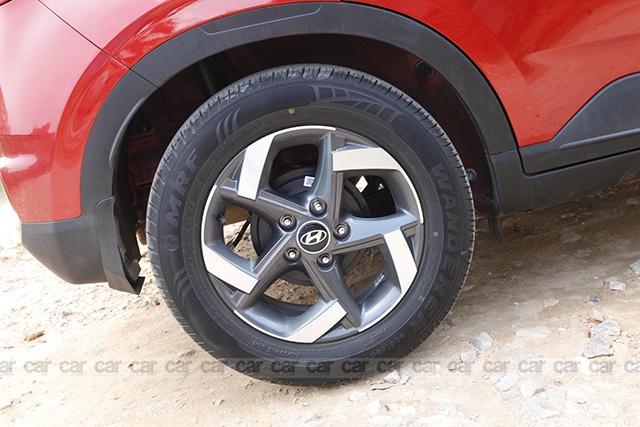
The rear styling seems more European, with bold creases and a minimalistic approach. The petite taillamps are a far cry from the sweeping ones seen on the Creta and come with an intricate layout. The separate reverse light unit is positioned nice and low, which illuminates the road well. The Venue has is elegant looking and will appeal to a wide range of car buyers.
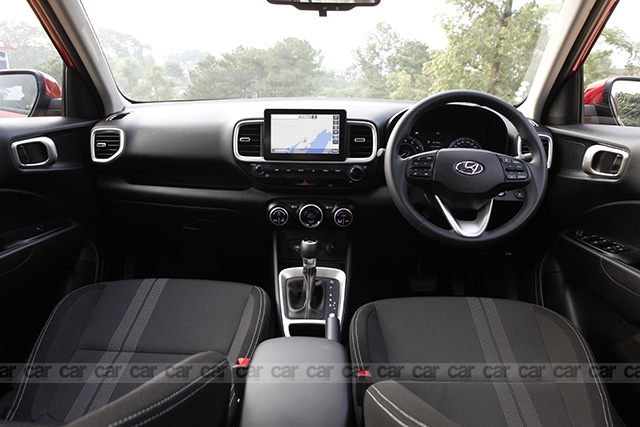
Interior
Hyundai doesn’t disappoint when it comes to the cabin quality either. The cabin is available in three colour options depending on the variant – beige and black with metal accents; all-black with red accents; and the all-black cabin with brush metal highlights which our test car had. The dashboard has an interesting mix of textures and follows a simple but elegant layout with smooth flowing lines. The quality of materials don’t break the segment threshold but do seem to be better than some of its competitors. Like the soft touch, a-c vents is good to have but the car also gets hard plastic in the lower part of the cabin. A pop-up-type touchscreen is mounted right in the centre which isn’t integrated into the dashboard. Below it are the a-c controls, a couple of USB outlets and a 12v charging socket. While the brush-metal highlights around the a-c vents and centre console look and feel premium. There just one coffee-mug holder available as the other is taken up by the air purifier, but you do get decent sized bottle holders on the door panels and a centre armrest with storage.
The combination of good visibility and ergonomics along with high seating position, a chunky steering wheel and well-bolstered seat will coax you to go on long drives. The ergonomics are well thought too. For instance, your right elbow won’t be brushing against the door panel when you turn steering wheel lock to lock, while the right elbow can sit comfortably on the armrest as you cruise for hours. I also like how smartly the cabin has been carved out to create good overall room. The seat in front and rear feel spacious and supportive, and the cabin is roomy enough to take your nuclear family around.
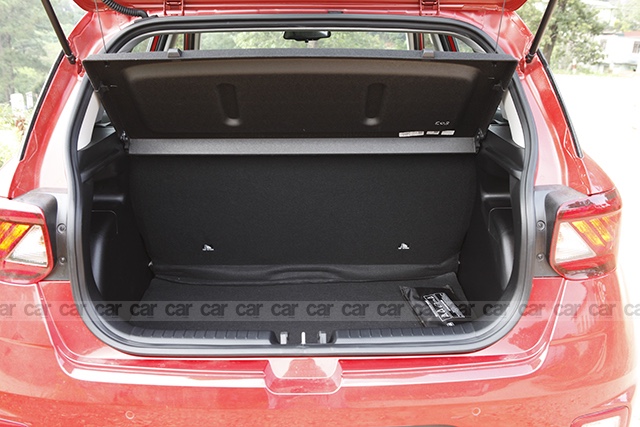
Getting three adults on the rear bench is possible but there’s limited shoulder room and no headrest in the centre. It was a relief to see that there’s decent knee-room for the rear seat passengers, plus there’s ample room under the front seat for them to stretch their legs during longer drives. Hyundai has also used some smart engineering to create good headroom so that even six-footers can sit in comfort.
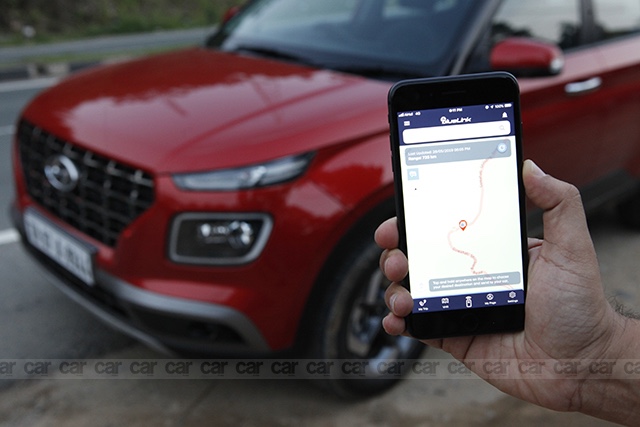
Features
Family road trips won’t be an issue either as there’s decent 350-litre boot space, and the top-end SX (O) variants also offer 60:40 split rear seat to help you accommodate larger luggage.
Hyundai have an interesting way to ‘spec’ their cars as they include in popular features while skipping some useful ones to keep the cost in check. The Venue has everything you need but doesn’t really try to beat the competition with segment defying features. So, the top-end SX(O) variant (only available in manual version) gets an extensive list which includes automatic climate control, cooled glove-box, an air-purifier, electrically powered sunroof with a manual sunblind, rear air-con vents and even a wireless phone charger. The eight-inch touchscreen comes with six speakers and is one of the smartest infotainment systems in the segment. The touch interface is pretty decent though not the most intuitive in the segment and comes with Apple CarPlay and Android Auto.

Apart from the usual sat nav and music system, it acts as an interface between the driver and Hyundai’s BlueLink app, making the Venue the company’s first connected car in India. Which means you can manage a host of features (33 to be precise) of the car right from their smartphones app. Things like locking or unlocking the car, start or kill the engine, even control the car’s air-conditioning system can be managed remotely. You can even track the car’s live location and get location-based alerts through Geofencing. I did try my hand at it, but there are a whole bunch of prerequisites that need to be in place before the BlueLink app charm works. With use, you get to figure it all out very easily. But in the limited time I got with the car, I did get the car’s GPS location on the smartphone and also managed to activate the alarm to startled my colleague. Cheap thrills.
As seen in some of the other Hyundai models, the top-end automatic variant (SX+ DCT) misses out on some features. For instance, it gets just two airbags as compared to the manual SX(O) version which comes with side and curtain airbags. The automatic SX+ version also doesn’t get a rear armrest or even a rear wiper, which for me are more important than having a sunroof.
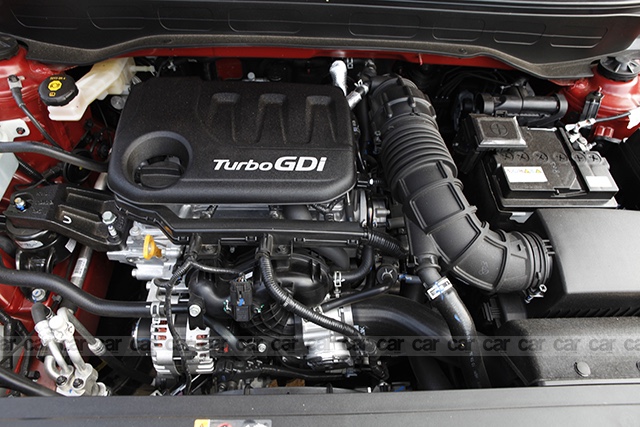
Hyundai Venue 1.0-litre DCT Petrol Variant
Talking about the DCT variant, it gets the new 998 cc, three-cylinder turbo petrol which makes 120 PS at 6,000 rpm and maximum torque of 172 Nm between 1,500-4,000rpm. Three-pods are infamous for their vibes, but Hyundai has managed to control this to a great extent. In fact, driving through Guwahati city, it felt surprisingly refined during slow speeds, without the gruffness of usual three-cylinders. It doesn’t have a silky nature of a four-cylinder but power delivery is smooth and you hardly notice the turbo kicking in. Since most of the torque is available on lower revs, it’s super easy to drive around town. It’s light and convenient to drive as you don’t have to bother about shifting gears manually nor worry about modulating the clutch. Moreover, in traffic, it crawled with ease without having to be extra cautious.
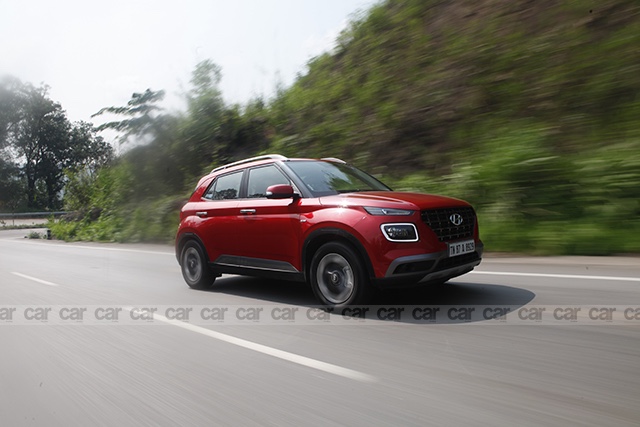
As we started to climb the hill and headed towards Shillong, it was time to crack the whip and exploit the open stretches of the highway. This one of the best driving roads in India with the great road surface and the long sweeping corners. The petrol engine might be small in size but has a nice peppy nature and it feels at home doing three digit speeds. At higher revs, it just sounds more coarse as compared to its four-cylinder counterparts, but the turbo ensures to keep the party lively. The big advantage it has over the competition is the slick seven-speed dual-clutch transmission (DCT). It may not be as intuitive as the one on Volkswagen cars but won’t give many opportunities to complain either. You’ll barely notice the shifts nor there’s no sudden spike of power.
The wide spread of power give it good flexibility so that it can go from 20 km/h to three-digit speeds in the third gear itself. This also makes it fairly efficient as Hyundai claims it to return 18 km/l. It’s when you slam hard on the accelerator pedal you can feel a slight delay in the downshifts, which makes one wish it had a Sport more or steering mounted paddle shifters. Though it’s not really a pocket rocket the DCT makes a good city car for everyday use and occasional highway runs.
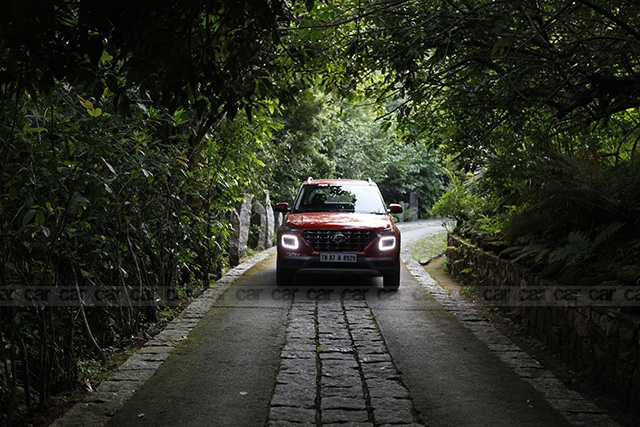
Hyundai Venue 1.4-litre Diesel Variant
It’s the familiar 1.4-litre common-rail turbo-diesel which we’ve seen on the Elite i20, the Verna and even on the Creta. On the Venue, this super-refined diesel produces 90 PS and is currently available with just a six-speed manual transmission. Like the petrol version, the oil-burner produces linear power. Even at lower revs, there’s a good part of the 220 Nm of torque available for smooth sailing and you’re never left wanting. At around 1,800 rpm, the turbo kicks in and you get a sense of the surge. The torque is so well spread that one can keep the second or third gear engaged (depending on the traffic) and keep driving without having to shift down.
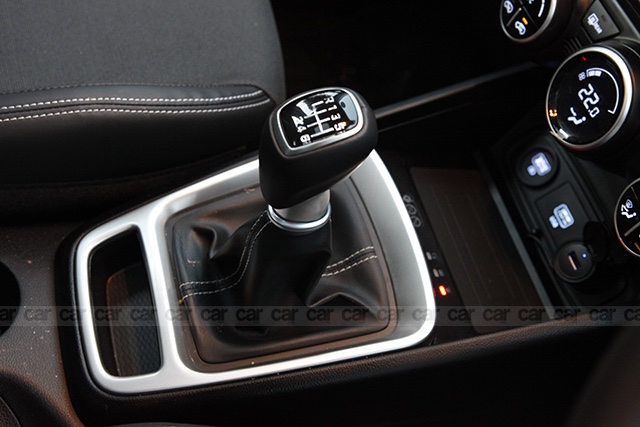
Call for it, and the 1.4-litre unit is quick to gather speed, and on the fast highway roads of the North East was the variant to have. On the drive back to Assam, it maintained three digit speed with the rev counter hoovering comfortably around 2,000 rpm. The journey back, somehow, seemed to be shorter and we reached Guwahati and still had enough time to buy some CTC tea. This relaxed and efficient nature of this tried and tested motor makes it the ideal pick if you have more inter-city travel.
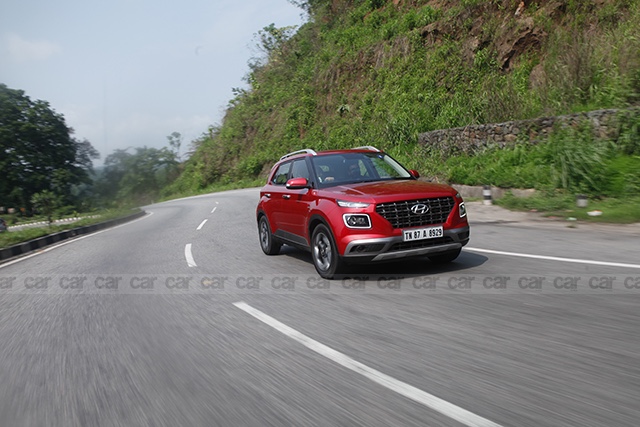
Ride and Handling
One of the aspects that Hyundai have been constantly improving with every new car is the steering feedback and the handling ability. The Venue is the latest product of this evolution and this one is a welcome change. The steering is light and easy at slow speed and gathers weight as the pace goes up. Owners will also make the crossover dance to their fingertips, thanks to the effortless steering and tight turning radius. And even while darting at highway speeds, it feels sure-footed when swerved from one lane to another. The steering feels isn’t exceptionally sharp but is surprisingly accurate and communicative.
The suspension is on the softer side and soaks in road undulations to offer a comfortable ride. Even at you speed over potholes the Venue doesn’t bottom out or thud over. As we paced through sharp hairpin bends and fast corners, one can feel some amount of body roll, but thankfully it settles down quickly. Meanwhile, the front disc and rear drum brake setup take care of the anchoring, and do a decent job at that, I desired a little more initial bite. The pedal needs a little more pressure than usual, and that’s something that one can adapt to very quickly.
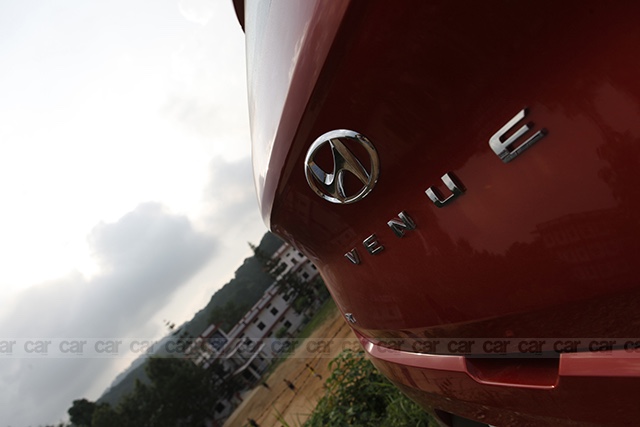
Final Words
Hyundai might be late for the compact-SUV party but have launched the Venue right in the middle of the dance floor. The cabin isn’t the largest but yet there’s ample space. The powertrain options aren’t the most powerful but are peppy enough and efficient too. Even the features list isn’t exceptional but has every creature comfort you’ll need. The price is also on par to its competition with the 1.0-litre DTC SX+ priced at Rs 11.11 lakh (ex-showroom); while the top of the line 1.4-litre diesel SX(O) comes for Rs 10.84 lakh (ex-showroom). It’s the overall package and the assurance the Hyundai brand bring that makes the Venue special. Probably why it has crossed 20,000 bookings already.











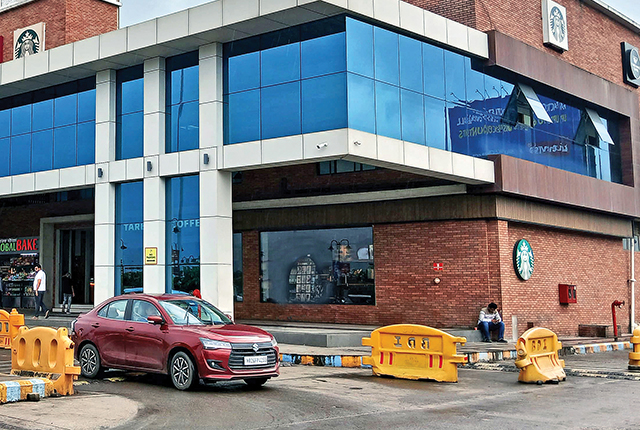








Leave a Reply